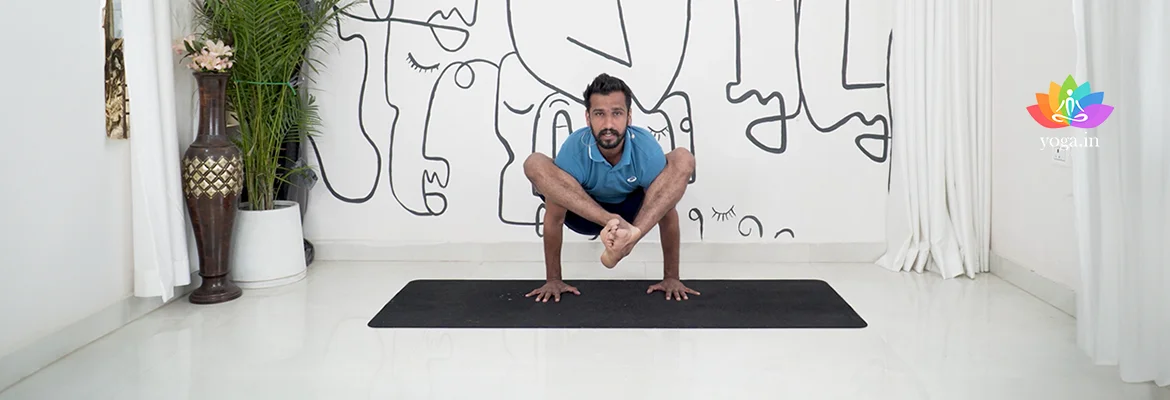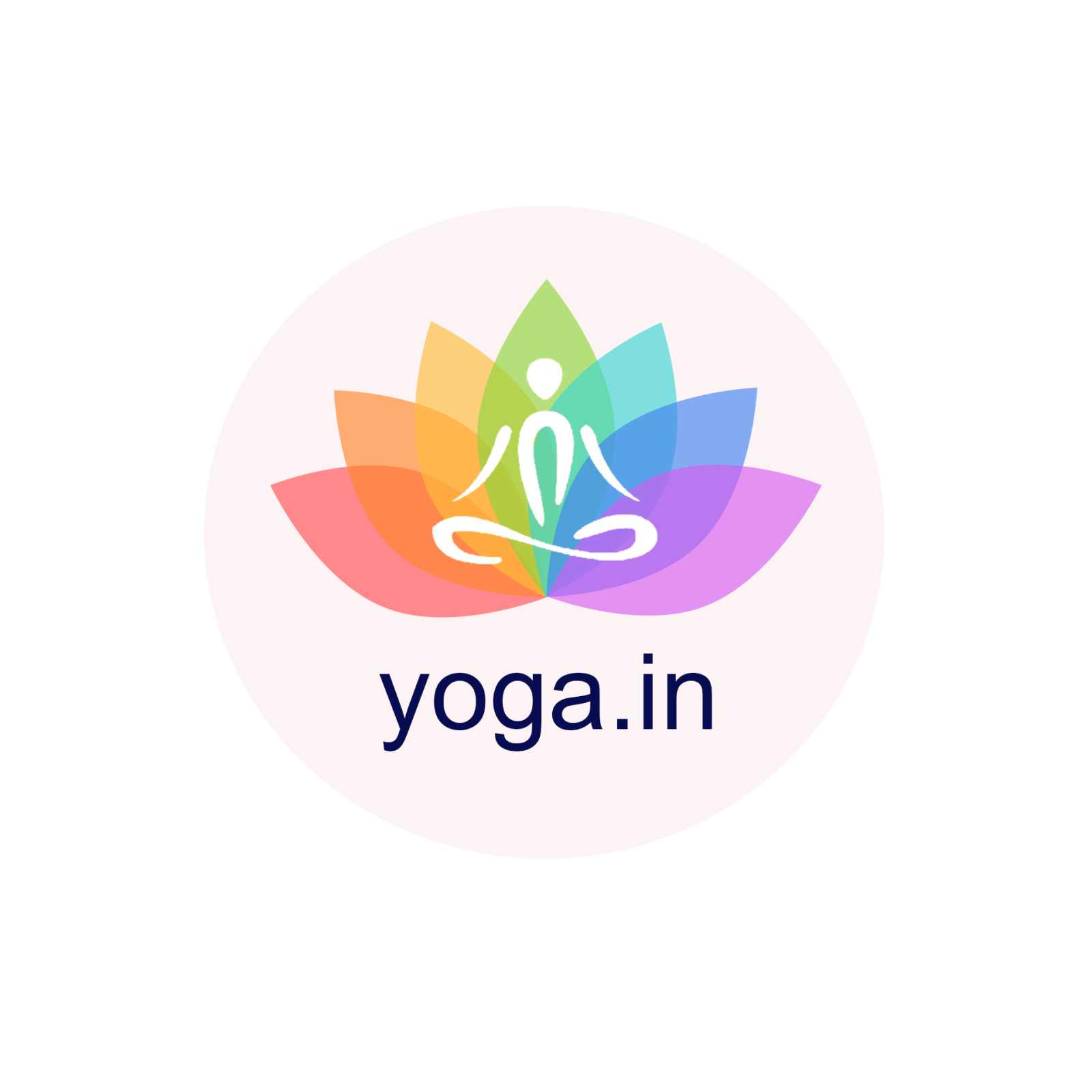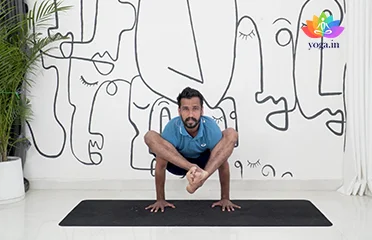Start in Malasana (Garland pose).
Introduction to the Asana
The Sanskrit name is derived from Bhuja (भुज) meaning arm/shoulder, Pida (पीडा) meaning pain and pressure and asana (आसन) meaning posture or seat.
Step to get in the pose
-
-
Get into a forward fold till your torso is between your inner thighs.
-
Raise your hips until they are parallel to the floor.
-
Draw your upper arms and shoulders as far under your knees as possible. Then place your hands at the outer edges of your feet, fingers facing forward.
-
Inhale and draw the torso forward, bringing weight into the palms of your hands.
-
Exhale and squeeze your thighs into your upper arms. Lean back and lift your feet off the floor with the weight in your hands. Cross your left ankle over the right ankle for an added challenge.
-
Take your gaze toward your toes.
-
Hold the pose for 30 seconds or up to a minute.
-
To exit, slowly release the ankles with an inhalation. Bend the elbow to settle the feet on the mat.
-
Repeat the pose with the right ankle over the left.
Common mistakes and pitfalls
-
Not done enough warm-up of your body to do the pose.
-
Lack of flexibility in the hands, wrist, and upper body.
-
Moving too quickly.
-
Arms sliding off the legs.
-
Not distributing weight evenly.
-
Dropping your body backward while in the final position.
Benefits
-
Strengthens your arms, legs shoulders, and core body.
-
Alleviates lower back pain.
-
Reduces effects of Asthma.
-
Tones and stimulates the abdominal organs.
-
Strengthens the upper spine musculature.
-
Opens the pelvis and hips.
-
Increases the flexibility of the hip joints.
-
Relieve Sciatica pain.
-
Improves blood circulation and oxygen levels in the body.
-
Relieves cardiovascular issues and controls heart rate.
-
Tones your abdominal muscles and boosts your body’s metabolism.
-
Tones belly fat and aids weight loss.
-
Nourishes the thyroid gland.
-
Relieves stress and headaches.
-
Relaxes the mind and helps improve overall physical and mental health.
Contraindication
-
Avoid in case of the spine, hips, groins, lower back, wrists, arms, ankles, knee or abdominal injuries.
-
Avoid if suffering from weak joints, arthritis, or coccyx pain (tailbone pain).
-
Avoid if suffering from carpal tunnel syndrome, tennis elbow, frozen shoulder or cervical spondylitis.
-
Avoid if there is a lack of body and breath awareness, as this pose may put pressure in the chest.
-
Avoid if suffering from vertigo, high blood pressure, migraine, trauma, anxiety, or depression issues.
-
Avoid during pregnancy, post-natal, and mensuration.




